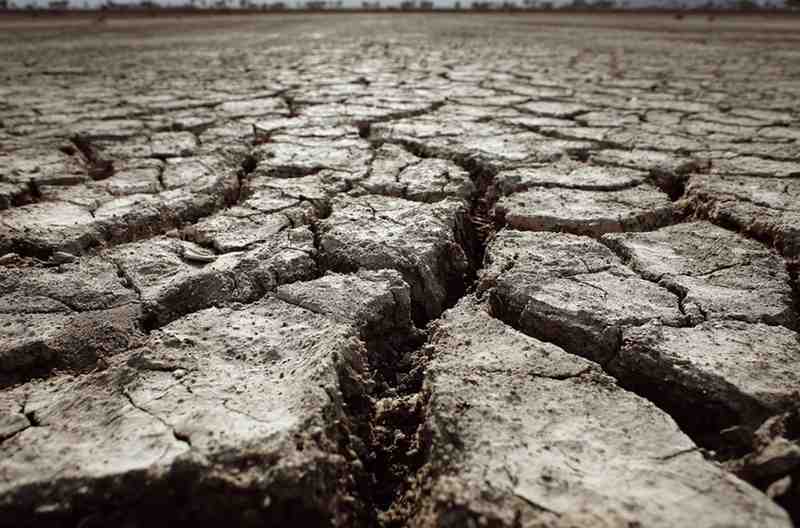Climate alarm or selective narrative? A critical look at the “rise” in extreme weather

The rise of environmental panic
From newsrooms to parliaments, a growing chorus warns that we are living through an era of environmental collapse. Headlines scream of apocalyptic heatwaves, catastrophic floods, raging wildfires and parching droughts. These events are presented as unprecedented and directly caused by man-made climate change, forming the basis for sweeping political action.
The narrative is one of urgency and fear, without immediate intervention, the Earth will become uninhabitable.
But do the facts support this narrative? Have these extreme events truly increased in severity and frequency, or is the public being misled by selective reporting, political incentives, and poor historical context?
To answer that, we must take a closer look at the data behind floods, droughts, heatwaves, wildfires, and storms, not through the lens of media sensationalism, but through long-term statistics and peer-reviewed research.
Have floods become more extreme and frequent?
Flooding is a staple of climate crisis imagery, submerged cars, collapsed bridges, devastated villages. Yet a deeper look reveals that the reporting of floods has increased, but the risk has not.
The International Disaster Database (EM-DAT) compiled by the Centre for Research on the Epidemiology of Disasters (CRED) shows a rise in reported flood events during the late 20th century. But this is largely attributed to better monitoring and more global attention, not to an actual rise in flooding.
When normalized for population and GDP, the death toll and economic damage from floods have declined significantly. According to Global Deaths from Floods (Our World in Data, Hannah Ritchie), the number of global deaths from flooding is over 90% lower today than it was in the early 20th century.
The IPCC Sixth Assessment Report (2021) states that there is low confidence in detecting or attributing global changes in flood magnitude or frequency to human influence. Some regions see more flooding, others see less. The changes are regional, not global or uniformly worsening.
So while urban development, deforestation, and poor planning may intensify local flooding, there is no evidence that climate change has created a global flood crisis.
Droughts, are they truly more frequent and deadly?
Drought is another recurring symbol in climate alarmism, cracked soil, withered crops, and dry riverbeds. But again, the long-term data tells a different story.
According to the State of the Climate in 2022 report by the American Meteorological Society, there is no clear global trend in drought severity over the last century. While some regions have experienced longer dry spells, others have seen increased rainfall. Globally, the picture is mixed.
The IPCC AR6 states that there is low to medium confidence that human influence has contributed to drought trends in most regions, except for a few areas such as the Mediterranean and southwestern United States. The data are too inconsistent to confirm a global increase in drought frequency or intensity.
Importantly, drought-related deaths have plummeted. In the early 20th century, famines linked to droughts killed millions. Today, thanks to irrigation, food trade, technology, and early warning systems, droughts rarely lead to mass mortality. According to Our World in Data, global deaths from droughts fell by over 95% since the 1920s.
In other words, while some droughts may be worsened by regional climate patterns, humanity has become far more resilient to them.
Rising temperatures, heat, but not always harm
There is little debate that the global average surface temperature has increased by about 1.1°C since the pre-industrial era. But the narrative that this warming spells inevitable disaster needs nuance.
Historically, extreme heat is not new. The 1930s Dust Bowl years in the U.S. remain some of the hottest on record, with temperatures surpassing recent extremes in many locations. For example, 1936 saw some of the highest ever U.S. heatwave temperatures, which still stand today.
Moreover, rising temperatures do not automatically translate to greater harm. A major study published in The Lancet (Mortality risk attributable to high and low ambient temperature, Gasparrini et al.) found that cold weather causes far more deaths than heat. Globally, about 4.5 million deaths per year are related to cold, compared to 0.5 million from heat. This means moderate warming may even save lives, especially in temperate regions.
It’s also important to remember that “record heat” is often a function of better measurement systems, expanding urban heat islands, and minor statistical margins, sometimes just fractions of a degree.
Thus, while warming is real, its impacts are far more varied and context-dependent than the media narrative implies.
Wildfires, more media than fire?
Few images strike fear like those of a flaming forest. But despite the emotional weight, global wildfire data paints a counterintuitive picture.
According to the Global Fire Emissions Database (GFED), the global area burned by wildfires has declined by about 25% since 2003. This is a global average, which includes large savannah fires in Africa that historically made up most of the world’s burned land. As these regions develop, fire frequency decreases.
What about the wildfires in California, Australia, or Greece? Many of these are made worse not by climate, but by land mismanagement, poor forest practices, and expanding urban development into fire-prone areas.
Stephen Pyne, fire historian and author of The Pyrocene, notes that “the rise in catastrophic fires is not necessarily due to climate change, but because we have broken the ancient relationship between people and fire.” For decades, fire suppression policies allowed deadwood and brush to accumulate, creating enormous fuel loads. When fires do occur, they become unmanageable.
As with floods, there’s a difference between more fires and more destructive fires. Media focus on the latter, especially in wealthy countries, while ignoring the global downward trend.
Are storms becoming more destructive?
Hurricanes, cyclones and typhoons often dominate climate coverage. It’s easy to link their power to warming oceans. But does the data support this?
The NOAA report Tropical Cyclones and Climate Change (2021) shows no significant upward trend in the frequency of hurricanes in the North Atlantic over the past 100 years. In fact, the U.S. experienced fewer landfalls of major hurricanes in the 1970s to 2010s than in earlier decades.
The IPCC acknowledges medium confidence that the proportion of intense (Category 4 to 5) storms may be increasing, but also admits low confidence in global increases in frequency.
Moreover, the damages from storms have increased mostly because of population growth and development in coastal regions, not because storms have become inherently worse. More infrastructure in harm’s way means more losses, even if storms remain the same.
And again, deaths from storms have dropped sharply. Improved forecasting, early warning systems, and emergency management have drastically reduced casualties from cyclones and hurricanes over the past century.
Media amplification and political incentives
So if many of these disasters have not objectively worsened, why does it feel like they have?
The answer lies in how these events are reported. Media logic thrives on sensationalism. A fire in Greece becomes global news. A hot day in Paris is a sign of apocalypse. Every storm, drought or flood is attributed, directly or subtly, to climate change.
This creates the illusion of increasing catastrophe, even if the underlying risk is stable or declining.
Governments and institutions also benefit from the narrative. Framing climate as a “crisis” allows for sweeping policy changes, international treaties, and budget allocations. The European Green Deal, for example, directs hundreds of billions toward climate initiatives, justified by the threat of disaster.
NGOs, scientists, and activists are not exempt from incentives. As Roger Pielke Jr. describes in The Climate Fix, research that emphasizes urgency is more likely to be funded and cited. Thus, institutional structures reward alarmism over nuance.
This doesn’t mean climate change is fictional. But it does mean that the portrayal of its effects is often exaggerated to support political or financial goals.
Statistics without context, a common distortion
A key technique in the alarmist toolbox is using absolute numbers without context. When headlines scream “Wildfires have doubled!” or “Floods have tripled!”, they rarely mention whether the increase is due to better reporting, population growth, or changes in definitions.
For example, if a country builds more infrastructure in floodplains, more people will be affected by flooding, regardless of whether rainfall has increased.
Normalization is essential. Economist Bjorn Lomborg points out in False Alarm that when adjusting for wealth and population, climate-related deaths have declined by over 95% since the 1920s. Meanwhile, media coverage of climate disasters has skyrocketed.
This creates a statistical illusion, more stories about disasters, even if the actual impact is lower.
The true threat, fear-driven policy
The real danger is not the weather, but fear-based governance. When policies are driven by panic instead of data, the outcomes can be economically harmful and socially regressive.
For example, net-zero energy policies often increase electricity costs, hitting the poorest hardest. Drastic agricultural restrictions in the name of “climate goals” have destabilized sectors and communities, as seen in the Netherlands and Sri Lanka.
There is a place for responsible climate action. But when based on misleading or exaggerated data, such action risks doing more harm than good.
A call for clarity and realism
The Earth is changing. But change does not equal collapse. Disasters do occur, but they are often exaggerated, stripped of historical context, and weaponized for ideological ends.
Humanity is more resilient, technologically advanced, and adaptive than ever before. Natural disasters still happen, but they are less deadly and less destructive, when measured properly, than in previous centuries.
The climate narrative must be rooted in truth, not terror. Alarmism breeds apathy, resentment, and poor policy. What we need is a realistic, balanced, and historically informed understanding of environmental change, one that empowers adaptation, not hysteria.


















